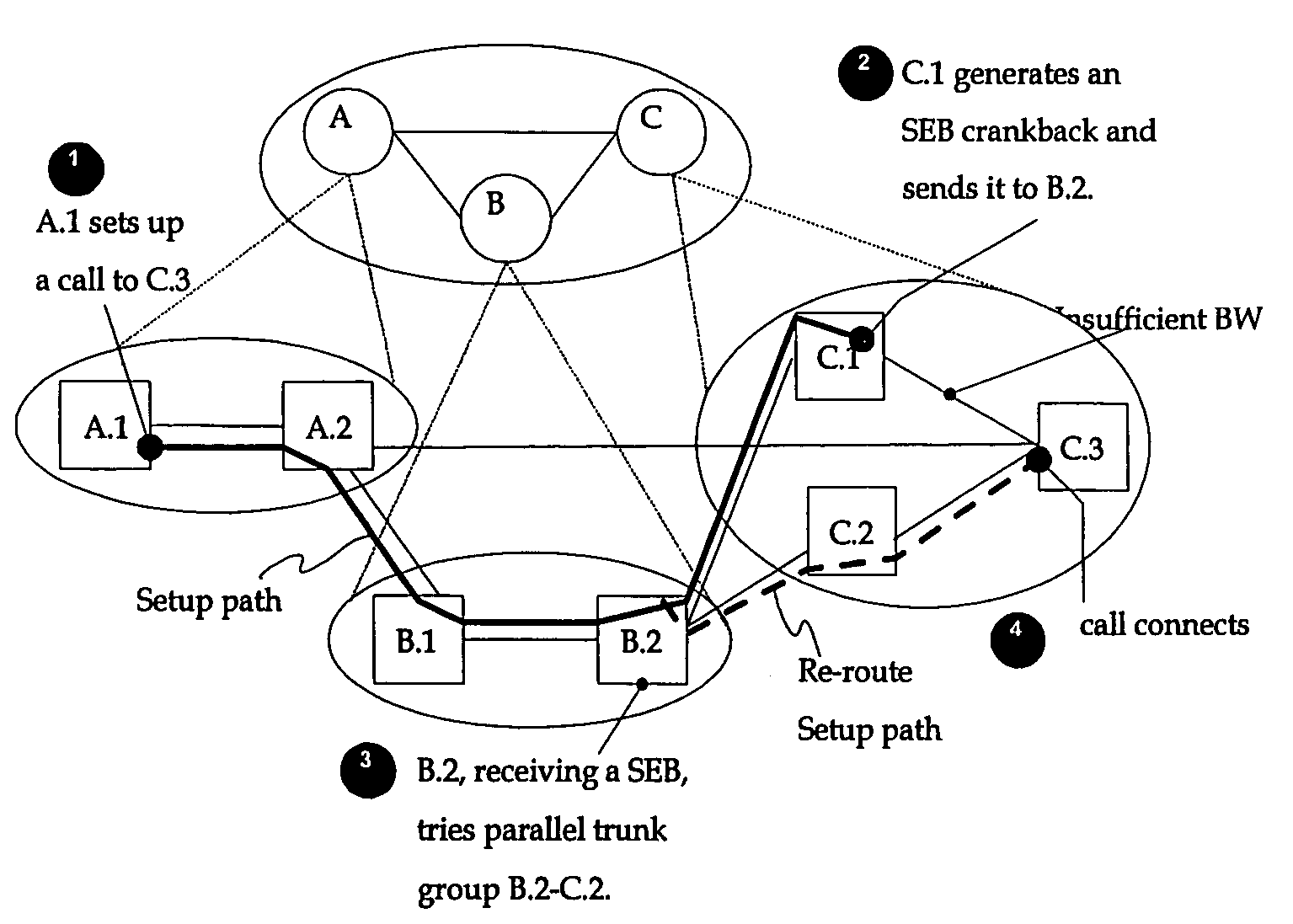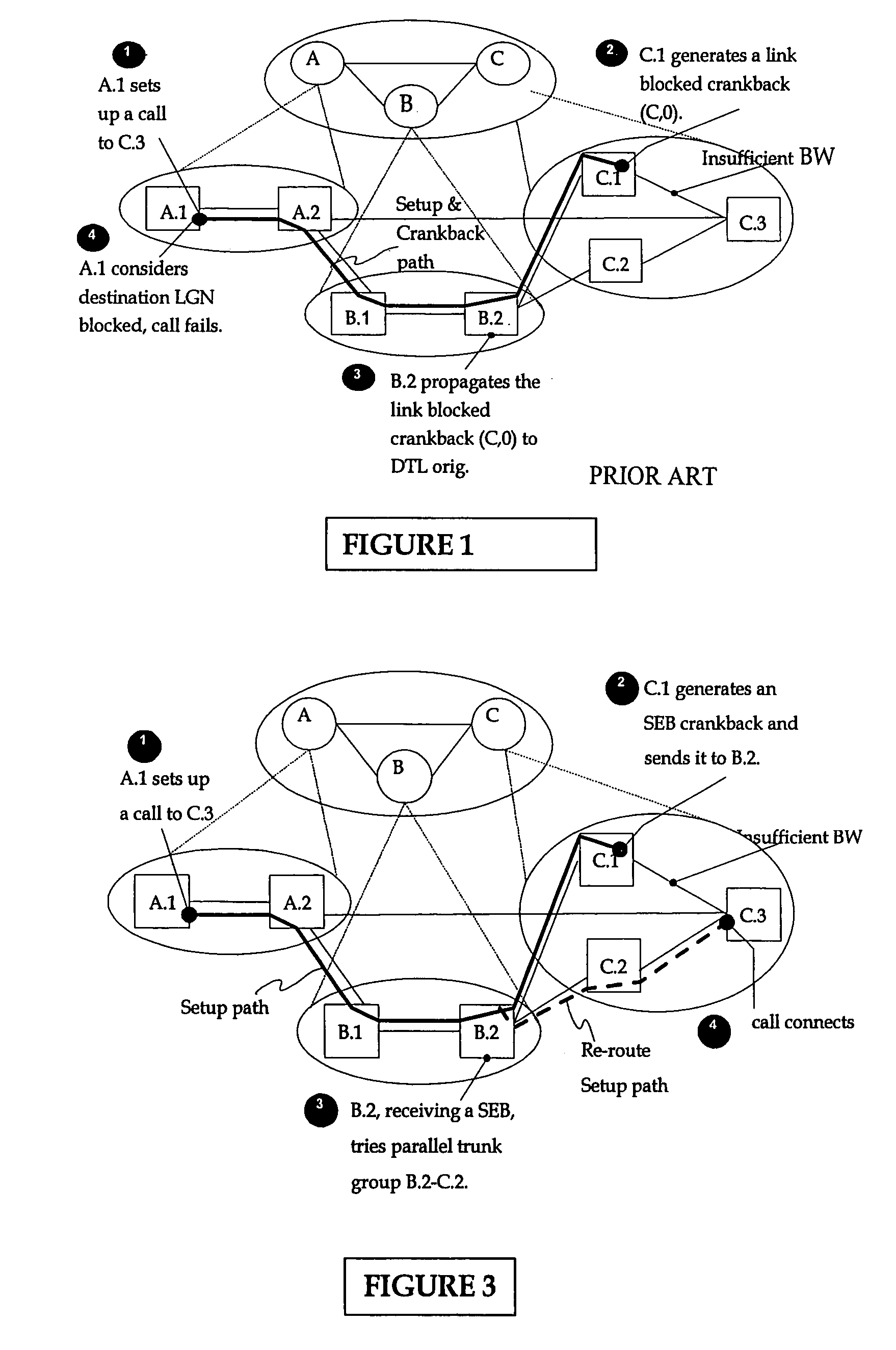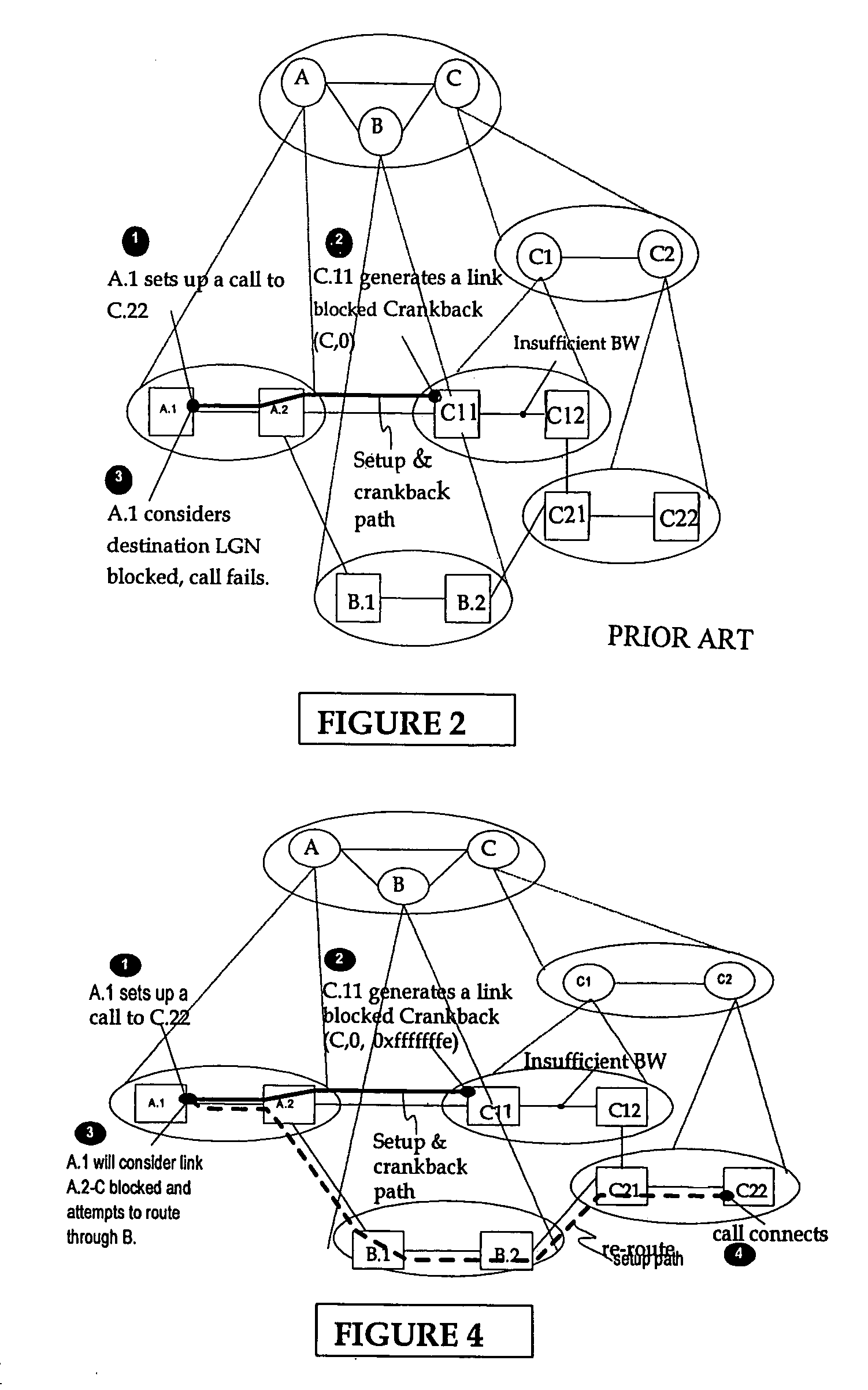Procedures for improving call routing in PNNI networks
a technology of pnni network and call routing, applied in the field of data communication network, can solve problems such as blocking of destination lgn, and achieve the effect of reducing call blocking in the network and enhancing call routing
- Summary
- Abstract
- Description
- Claims
- Application Information
AI Technical Summary
Benefits of technology
Problems solved by technology
Method used
Image
Examples
Embodiment Construction
[0025]The crankback procedures set out in the PNNI specification have been revised by the crankback procedures of the present invention. These procedures known herein as Destination LGN Blocked crankback procedures are used by entry border nodes in the lowest level destination peer group, entry border nodes in the last LGN of the DTL stack for the call (i.e. entry border nodes in the last LGN not at the lowest level), and DTL originating nodes or routing-capable entry border nodes to make routing decisions based on received crankback information.
[0026]The revised Destination LGN Blocked crankback procedures operate according to the following protocol.
[0027]An entry border node in the lowest level destination peer group generates a Succeeding End Blocked (SEB) crankback whenever it fails to route the call within the peer group for any reason other than the blocking of the physical destination node to the target address itself. An entry border node knows when a physical node to the ta...
PUM
 Login to View More
Login to View More Abstract
Description
Claims
Application Information
 Login to View More
Login to View More - R&D
- Intellectual Property
- Life Sciences
- Materials
- Tech Scout
- Unparalleled Data Quality
- Higher Quality Content
- 60% Fewer Hallucinations
Browse by: Latest US Patents, China's latest patents, Technical Efficacy Thesaurus, Application Domain, Technology Topic, Popular Technical Reports.
© 2025 PatSnap. All rights reserved.Legal|Privacy policy|Modern Slavery Act Transparency Statement|Sitemap|About US| Contact US: help@patsnap.com



